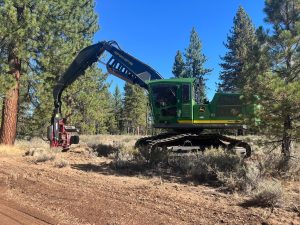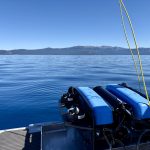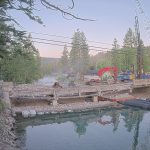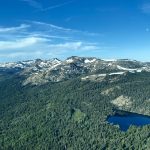Depths of Lake Tahoe revealed in Tahoe Fund and Restoring the Lake Depths livestream
INCLINE VILLAGE, Nev. – On Friday, the Tahoe Fund and Restoring the Lake Depths Foundation used an ROV called Deep Emerald (affectionately nicknamed Emmy) to trawl Lake Tahoe’s depths. The high-definition camera captured what looked like a deep blue starfield at 1,570 feet below, an exciting glimpse below the water that few have seen.
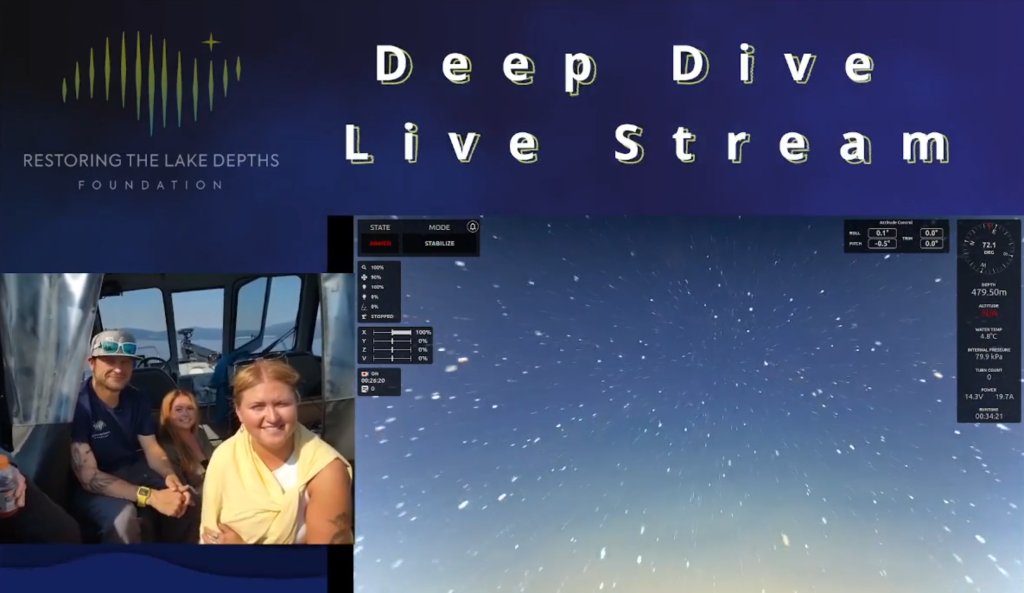
Deep Emerald was funded by the Tahoe Fund and Martis Camp Foundation and is the flagship remote-operated vehicle of Restoring the Lake Depths Foundation. It has a fiber optic tether, which allows it to have higher resolution video capabilities, better data feedback and enables it to reach the depths of the lake.
Tim Crandle, president of SeaView Systems, explained that the company helped modify the ROV to enable these features—traditional ROVs use a copper cable, which doesn’t allow for the same resolution and depth capability. Deep Emerald has open-source electronics from Blue Robotics and Mission Robotics.
Crandle also said that he believed in the future, ROVs could be programmed to function autonomously, like picking up trash. The Martis Fund provided the Restoring the Lake Depths Foundation with a grant that funded a tether system, which allows them to pull trash they collect with ROVs.
Lindsay Kopf, founder and director of Restoring the Lake Depths Foundation, piloted Deep Emerald around the bottom of the lake. She described the controls as “really sensitive” and compared them to a video game, saying, “I didn’t grow up playing video games, so this was something for me to learn. Now, I love it, and this is my favorite ‘video game’ that was ever created!”
Kopf said that in previous expeditions, they’ve used attachments to pull litter from the lake. She said they’d pulled approximately 80 tires from the lake and in a previous expedition even saw a perfectly preserved Happy Birthday balloon at the very bottom of the lake. “It was very eerie,” said Kopf.
During the descent, Tahoe Fund CEO Amy Berry also spoke with Sudeep Chandra, foundation professor of limnology at the University of Nevada, Reno at Lake Tahoe and the Tahoe Institute for Global Sustainability.
Chandra explained that the blue hue of the lake comes from the comparably small watershed that feeds the lake—the volume of the lake can accept the low amount of debris that comes from its source. The granitic rock around the lake also leads to less runoff and therefore, less algal growth.
Tahoe is one of the oldest lakes, if not the oldest lake in North America, according to Chandra. It was formed through tectonic shifts, volcanic activity and glaciation—three processes that created the iconic shape we know today. Yet still, the lake is sculpted by these continued geological forces, which make the mountains higher around it and the lake grow deeper over time.
Chandra spoke of some of the endemic species of the lake, including the Lake Tahoe stonefly and blind amphipods that live at the bottom of the lake. “These are about the size of a quarter or smaller,” said Chandra, who explained that these creatures live on top of and within plant beds. “They’re eating the little bacteria and algae that grow on the plant beds, they feed fish that are in the lake, they process the sediments that come from the watershed… which keeps our clarity.”
As the ROV began to travel the bottom, Chandra marveled at how the camera allowed viewers to see in the “dark abyss” of the lake and commented that the water really was a shade of blue, “equally unique as the surface.”
The “stars,” visible as the ROV drove through, were soft sediments and what Chandra referred to as “flocculent material”, which are particles that come out of the sediment spontaneously. Otherwise, the water at the bottom of the lake was extremely clear.
That clarity of the lake is aided through projects like the Motel 6 demolition at Upper Truckee Marsh in South Lake Tahoe, which Berry highlighted as one of the Tahoe Fund projects she was excited about. The restoration of the marsh there will prevent sediments from entering the lake, as the meadows act like a sponge.

One of the questions that the audience submitted was wondering if there would be dead bodies at the bottom of the lake—which Berry reported that they’d never seen in all of their dives. Berry referenced the myth of Jacques Costeau visiting the lake and saying that people “weren’t ready to know what was at the bottom of the lake.”
Chandra said, “It also means there’s a new sense of adventure. Jacques Costeau hasn’t been here. Imagine the new Jacques Costeau going down to the deep part of the lake.”
The stream ended with a thanks to everyone watching, the partners of the Tahoe Fund and the Restoring the Lakes Depths Foundation, and invited people to learn more at tahoefund.org and restoremylake.org.
You can watch a recording of the livestream at https://www.tahoefund.org/first-ever-livestream-journey-to-the-bottom-of-lake-tahoe/
Eli Ramos is a reporter for Tahoe Daily Tribune. They are part of the 2024–26 cohort of California Local News Fellows through UC Berkeley.
Support Local Journalism


Support Local Journalism
Readers around Lake Tahoe, Truckee, and beyond make the Sierra Sun's work possible. Your financial contribution supports our efforts to deliver quality, locally relevant journalism.
Now more than ever, your support is critical to help us keep our community informed about the evolving coronavirus pandemic and the impact it is having locally. Every contribution, however large or small, will make a difference.
Your donation will help us continue to cover COVID-19 and our other vital local news.

